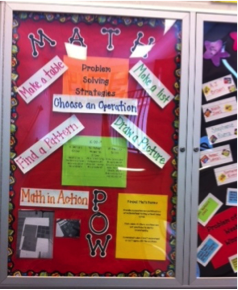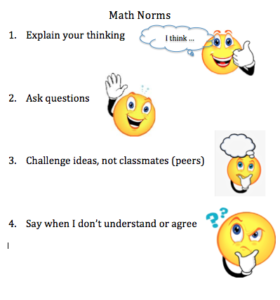What are Math Norms?
Math Norms are a set of expectations that describe what should be occurring in the classroom during math instruction. Norms should be written in a positive manner and outline student and teacher actions. Norms should cover how to engage in tasks such as: Using tools to solve problems, communicating thinking, and showing student work. Norms should be written in kid friendly language and clearly posted in the classroom for both student and teacher reference.
Why use Math Norms?
Kindergarten students need explicit modeling of how to engage in a mathematics lesson. Norms provide clear, positive, and achievable expectations for how both the students and teachers will act in the math classroom. Setting norms will show students how to become an active part of the classroom thus increasing classroom culture.
When do I introduce Math Norms?
Math norms should be introduced during the first weeks of school. The Kindergarten Instructional Guides provides opportunities during the first 9 days of instruction to establish and practice Math Norms. You might want to take pictures of students engaging in the Math Norm and post them next to the Math Norms as a visual reminder of the expectations. It is important that you continue practicing these Math Norms throughout the school year.
What are some examples of Math Norms I could use?
1. Explain your thinking
2. Ask questions
3. Challenge ideas, not classmates (peers)
4. Say when I don’t understand or agree
5. Actively participate in all learning tasks
6. Choose and use math tools appropriately
7. Show your work in more than one way
8. When a classmate is sharing, be prepared to respond with how you agree,
disagree or ask a question (Actively Listen)
9. Be Respectful when you agree/disagree with someone
Work with your students to create 3-5 norms that outline the Math Behaviors you would like to see in your classroom. It is important to explicitly practice those Math Norms so that all stakeholders are aware of the expectations.
For more information on Math Learning Environments, read the article below
http://www.nctm.org/Publications/teaching-children-mathematics/2011/Vol17/Issue8/A-reflective-protocol-for-mathematics-learning-environments/

